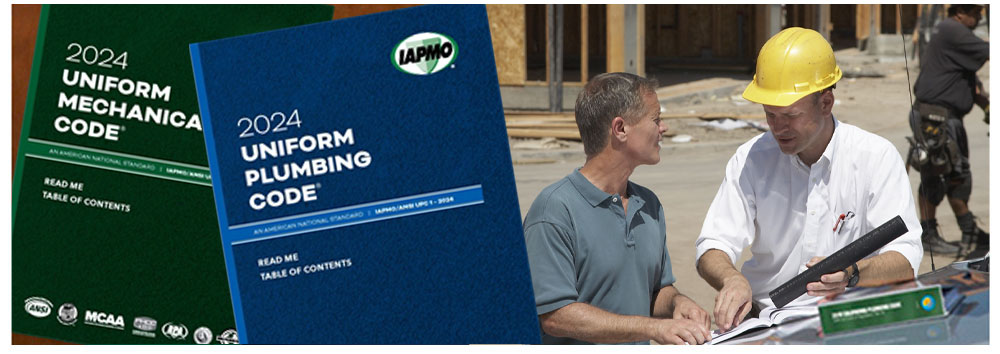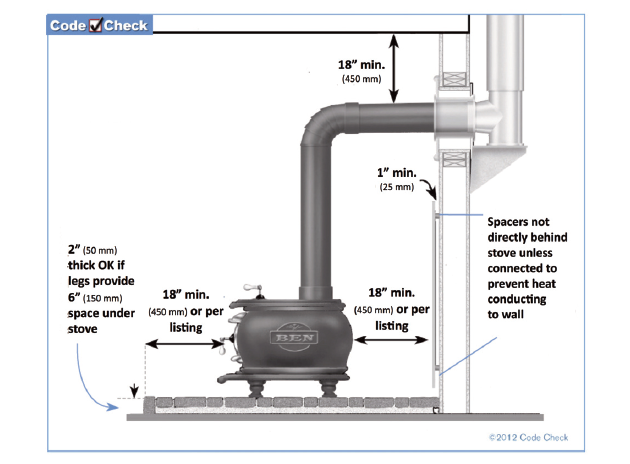April 25, 2024

From the 2024 UPC Illustrated Training Manual, Chapter 5 – WATER HEATERS
507.2 Seismic Provisions. Water heaters shall be anchored or strapped to resist horizontal displacement due to earthquake motion. Strapping shall be at points within the upper one-third and lower one-third of its vertical dimensions. At the lower point, a distance of not less than 4 inches (102 mm) shall be maintained from the controls with the strapping.
Parts of the country that historically have had very few earthquakes are now experiencing an increase in seismic activity. In 2015, the U.S Geological Survey (USGS) released a report showing that there was an increase in earthquakes in the central and eastern United States. This increase in seismic activity nationwide prompted the requirement for all water heaters, regardless of location, to be strapped or anchored. Seismic activity can cause the water heater to be displaced, creating a potentially dangerous condition. The gas connector may break (which could allow gas to flow freely into the space), or the vent connection may separate, allowing products of combustion to enter the space. Consideration must also be given to the possibility of a fire started by the water heater from damage to either the fuel-gas or electrical connections to the tank. In the event of a prolonged interruption of utilities, water heaters may provide an emergency source of drinking water, particularly if they are properly restrained and not destroyed during the earthquake. See Figure 507.13a for an example of water heater restraints.

RESIDENTIAL GARAGE WATER HEATER INSTALLATION
From the 2024 UMC Illustrated Training Manual, Chapter 9 – INSTALLATION OF SPECIFIC APPLIANCES
902.10 Solid-Fuel-Burning Appliances. Unless otherwise specified, solid-fuel-burning appliances shall be installed in accordance with NFPA 211 and the manufacturer’s installation instructions.
Chimneys for solid fuel appliances must be either field or factory built. Connectors for solid fuel appliances must be factory built chimney material, Type L vent or steel pipe resistant to corrosion and heat. Galvanized steel pipe is prohibited for use with solid fuel appliances. Connectors and chimneys for solid fuel appliances need to be “designed, located and installed to allow access for internal inspection and cleaning.” An example of a clearance reduction system in accordance with NFPA 211 for solid fuel room heaters, fireplace stoves, room heater/fireplace stove combinations, and ranges is shown in Figure 902.10. Furnaces and boilers, along with nonresidential appliances, have further restrictions for clearances to combustibles.

FIREPLACE STOVE REDUCTION CLEARANCES
(Courtesy of Code Check)
Listed wood burning appliances shall be installed in accordance with the building code, the appliance listings and the manufacturer’s instructions. Particular attention must be paid to ensure adequate combustion air, the proper anchorage of chimneys, clearance to combustibles and terminations above the building roof and adjacent structures based on the flue outlet temperatures of the combustion gases.
(This is not to be considered the official position of IAPMO, nor is it an official interpretation of the Codes.)

IAPMO
IAPMO develops and publishes the Uniform Plumbing Code®,the most widely recognized code of practice used by the plumbing industry worldwide; Uniform Mechanical Code®; Uniform Swimming Pool, Spa and Hot Tub Code®; and Uniform Solar Energy, Hydronics and Geothermal Code™ — the only plumbing, mechanical, solar energy and swimming pool codes designated by ANSI as American National Standards — and the Water Efficiency Standard (WE-Stand)™. IAPMO works with government, contractors, labor force, and manufacturers to produce product standards, technical manuals, personnel certification/educational programs and additional resources in order to meet the ever-evolving demands of the industry in protecting public health and safety.
Last modified: April 25, 2024
